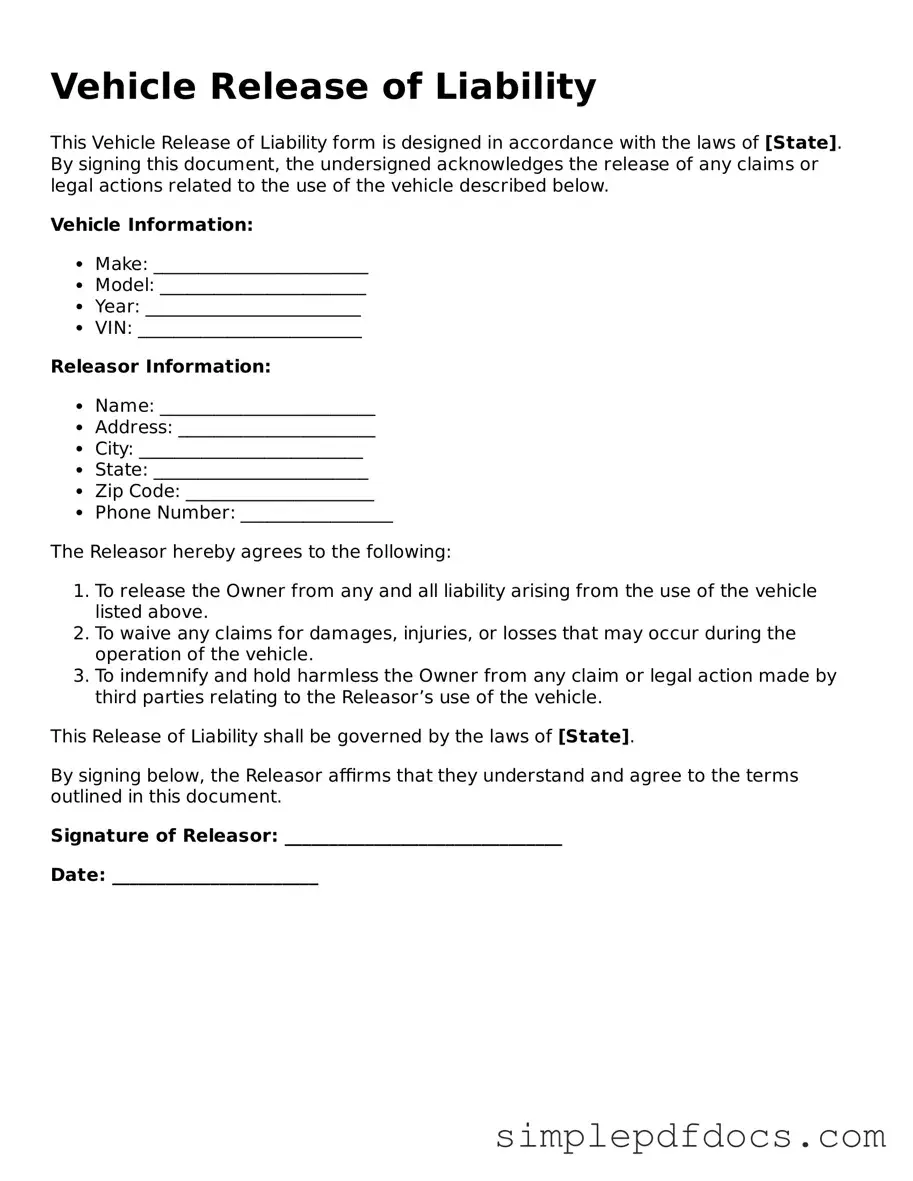When it comes to the ownership and transfer of vehicles, clarity and protection are paramount. The Vehicle Release of Liability form serves as a crucial document in this process, ensuring that the seller is not held responsible for any incidents or damages that may occur after the vehicle has been sold or transferred. This form typically includes essential details such as the names of both the seller and the buyer, the vehicle identification number (VIN), and the date of the transaction. By signing this document, the seller effectively relinquishes any future claims related to the vehicle, providing peace of mind as ownership changes hands. It is also important to note that this form may be required by certain states to formally notify the Department of Motor Vehicles (DMV) about the change in ownership, thus helping to prevent potential legal complications down the line. Understanding the nuances of this form can empower individuals to navigate the vehicle transfer process with confidence, minimizing risks and ensuring that all parties are adequately protected.
